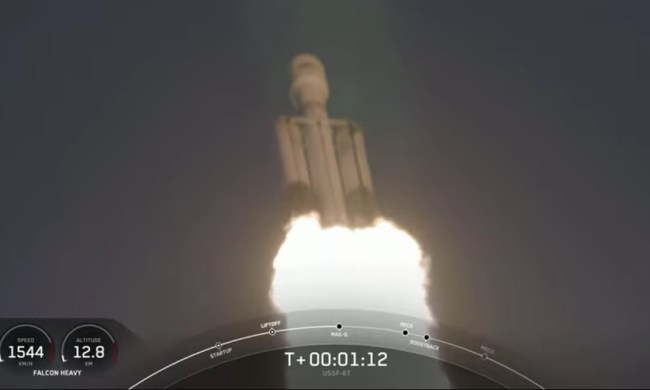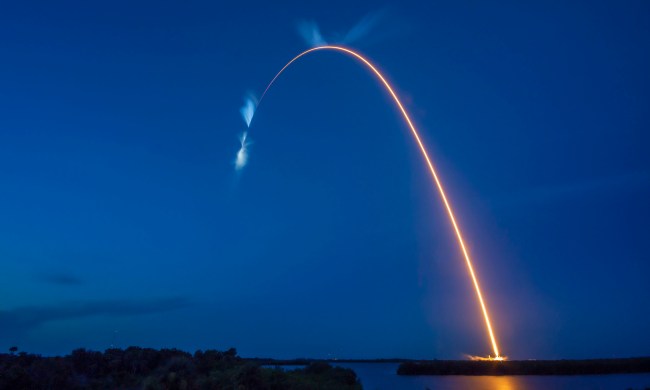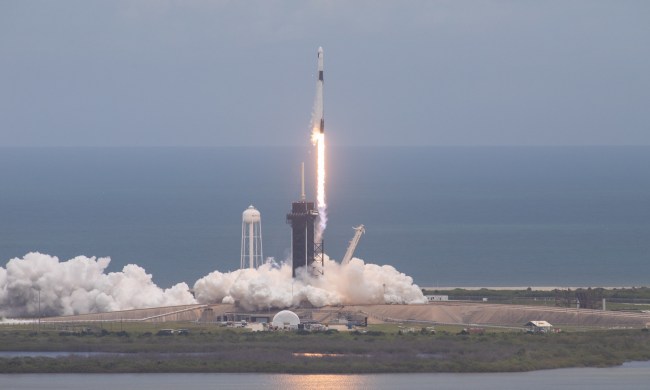Updated May 17: The launch went ahead successfully on Sunday, achieving milestones including the payload fairing jettison and staging and ignition of the upper stage as planned. The launch occurred at 6:14 a.m. PT. If you missed it, you can watch the launch using the video embedded below.
LIFTOFF! Liftoff of the United Launch Alliance #AtlasV rocket on the #USSF7 mission featuring the #X37B Orbital Test Vehicle for the United States Space Force! And Atlas has cleared the tower!https://t.co/5ZftXlaW5X@SpaceForceDoD @AF_SMC#AmericaStrong pic.twitter.com/QE0Khvw15l
— ULA (@ulalaunch) May 17, 2020
Sunday is go day! The U.S. Air Force, along with the newly-minted Space Force, is about to launch the mysterious X-37B space plane on a sixth secretive mission. Launch is currently planned for 6:14 a.m. PT on Sunday, following a scrubbed launch originally planned for Saturday morning.
The unmanned space plane is able to cruise for extremely long periods in low-Earth orbit without apparent need to refuel, and in an orbital pattern which makes it extremely difficult to track.
The Air Force has been working on the X-37B for over a decade now, although the exact details of how it works and what its aims are have been kept strictly under wraps. The Air Force website has minimal details about the plane, saying it is “an experimental test program to demonstrate technologies for a reliable, reusable, unmanned space test platform for the U.S. Air Force,” and that the program aims to create reusable spacecraft technologies, as well as performing unnamed experiments.
In August last year, the space plane set a new record for time spent in low-Earth orbit, at 718 days. Then, in October 2019, it beat that previous record by achieving 780 days in low-Earth orbit.

What we know about the launch
On Sunday morning, the X-37B will launch into space once again. This will mark its sixth mission in orbit, although the Air Force has not announced what the purpose of this mission is. The plane will be carried by a United Launch Alliance (ULA) Atlas V rocket, as part of a mission designated USSF-7 (United States Space Force-7), launched for Space Launch Complex-41 at Cape Canaveral Air Force Station, Florida.
Communications channels here in the #AtlasV Launch Control Center are quiet as console operators monitor their systems during this built-in hold. No significant issues are being worked. pic.twitter.com/VtuVGGzxps
— ULA (@ulalaunch) May 17, 2020
In its notes about the launch, ULA says, “The Department of the Air Force Rapid Capabilities Office continues to push the flight envelope for the X-37B and will build upon its growing collaboration with experiment partners with its sixth mission.”
It also shared that the same mission will deploy a small satellite called FalconSat-8, developed by the Air Force Academy to conduct unspecified experiments, as well as two NASA experiments for studying space radiation.
How to watch the launch
The launch was originally set for Saturday, but it had to be pushed back twice due to weather conditions. The launch is now targeted for 6:14 a.m. PT on Sunday.
Darn weather. See you tomorrow. Going to need everyone to focus on those calm, clear thoughts even harder… #USSF7
— Tory Bruno (@torybruno) May 16, 2020
You can watch the launch live using the link below:
Update May 17: Added information about a second delay and the new launch time and date.



